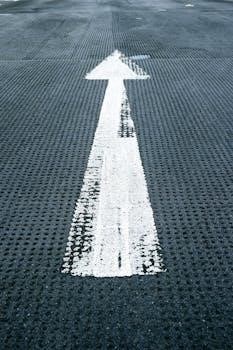Sticker Guide⁚ A Comprehensive Overview
Welcome to the ultimate sticker guide! This comprehensive resource explores the captivating world of stickers, from their diverse types and materials to design principles and application techniques. Whether you’re a seasoned collector or a curious beginner, prepare to unlock the full potential of these versatile adhesives.
Stickers, those small yet impactful pieces of adhesive art, have surged in popularity, becoming a universal tool for self-expression, branding, and creative projects. Their versatility, cost-effectiveness, and visual appeal make them ideal for conveying messages, enhancing product presentation, and boosting customer engagement. From classic paper stickers to waterproof and holographic options, the possibilities are endless.
This guide will answer your questions about stickers and give you a comprehensive understanding of their uses and creation. We will cover the different types of stickers, including die-cut and kiss-cut stickers, and discuss the various materials used in their production. Additionally, we will explore the fundamental design principles that make stickers visually appealing and effective.
Whether you’re looking to create custom stickers for personal use or to promote your business, this guide will provide you with the knowledge and resources you need to succeed. Get ready to dive into the colorful and creative world of stickers!
Types of Stickers⁚ Materials and Cuts
Stickers come in a wide array of materials and cuts, each offering unique characteristics and applications. The choice of material significantly impacts the sticker’s durability, appearance, and suitability for various environments. Paper stickers are a classic, cost-effective option for indoor use, while vinyl stickers provide superior water resistance and longevity.
Beyond materials, the cut of a sticker determines its shape and how it’s separated from the backing. Die-cut stickers are cut precisely to the design’s edge, creating standalone stickers with custom shapes. Kiss-cut stickers, on the other hand, have a flexible peel-off backing, making them easy to remove and apply.
Understanding the different materials and cuts is crucial for selecting the perfect sticker for your needs. Whether you prioritize durability, aesthetics, or ease of use, this section will guide you through the options available.
Explore the diverse world of sticker materials and cuts to unlock the full potential of these versatile adhesive labels.
Die-Cut Stickers

Die-cut stickers are a popular choice for their clean, professional look and ability to create custom shapes. Unlike other sticker types, die-cut stickers are cut precisely to the edge of the design, completely separating the sticker from the backing paper. This results in a standalone sticker with a unique and eye-catching appearance.
The die-cutting process involves using a specialized cutting tool to create the desired shape. This allows for intricate designs and precise cuts, making die-cut stickers ideal for logos, illustrations, and other detailed artwork.
One of the main advantages of die-cut stickers is their versatility. They can be used for a wide range of applications, from branding and marketing to personal expression and decoration. Their custom shape makes them stand out and adds a touch of personality to any surface.
Die-cut stickers are also durable and long-lasting, making them suitable for both indoor and outdoor use. Their high-quality finish ensures that your design will look its best for years to come.
Kiss-Cut Stickers
Kiss-cut stickers offer a unique and flexible approach to sticker design, providing ease of use and versatility. Unlike die-cut stickers, kiss-cut stickers are not completely cut through the backing paper. Instead, the cutting blade only penetrates the vinyl layer, leaving the backing intact. This creates a sticker that is easy to peel off while maintaining its shape.
The term “kiss-cut” refers to the light touch of the cutting blade, which gently kisses the surface of the vinyl without cutting through the backing. This technique allows for intricate designs to be easily removed from the sheet, making them ideal for promotional giveaways, product labels, and personal use.

Kiss-cut stickers are particularly useful for creating sticker sheets or multiple stickers on a single backing. This allows for a variety of designs to be presented in an organized and convenient manner.
The ease of peeling and applying kiss-cut stickers makes them a popular choice for both businesses and individuals. Their versatility and convenience make them a valuable tool for branding, marketing, and self-expression.
Sticker Design Principles
Creating compelling stickers involves understanding fundamental design principles that capture attention and effectively communicate a message. Visual hierarchy is crucial; guide the viewer’s eye using size, color, and placement to emphasize key elements. Ensure readability by selecting appropriate fonts and sizes, especially for text-heavy designs.
Color theory plays a vital role. Choose colors that align with your brand or message, considering color psychology and contrast for visual impact. Simplicity is key; avoid overcrowding the design with unnecessary details. A clean, focused design is more memorable and easily recognizable.
Consider the shape and size of your sticker. Custom shapes can add uniqueness, but ensure they complement the design. Resolution matters; use high-resolution images to prevent pixelation. Balance is essential; distribute elements evenly to create a harmonious composition.
Remember your target audience and purpose. A sticker for a children’s product will differ significantly from a corporate logo. Effective sticker design blends aesthetics with functionality, leaving a lasting impression. Utilize white space effectively to avoid a cluttered appearance and create a visually appealing design.
Creating Custom Stickers⁚ A Step-by-Step Guide
Embarking on the journey of creating custom stickers involves a series of well-defined steps. First, conceptualize your design. Brainstorm ideas, sketch prototypes, and refine your vision. Next, choose your design software. Options range from user-friendly platforms like Canva to professional tools like Adobe Illustrator.
Now, bring your design to life. Import or create your artwork, paying close attention to resolution and color accuracy. Select your sticker material. Consider factors like durability, weather resistance, and adhesive strength. Die-cut or kiss-cut? Decide on the cutting style that best suits your needs.
Prepare your file for printing. Ensure it meets the printer’s specifications, including bleed area and file format. Choose a reputable sticker printing service. Compare pricing, turnaround times, and customer reviews. Place your order and await your custom stickers.
Upon arrival, inspect your stickers for quality and accuracy. Apply them to surfaces with care, ensuring proper adhesion. Share your creations and revel in the joy of personalized stickers. This step-by-step approach empowers you to transform your creative ideas into tangible, eye-catching stickers.
Color-Based Sticker Categorization
Organizing stickers by color offers a visually appealing and practical approach to categorization. This method enhances organization, making it easier to locate specific stickers for various projects. Begin by establishing primary color categories⁚ red, orange, yellow, green, blue, and violet. Subdivide these categories further into lighter and darker shades, creating a more nuanced system.
Consider incorporating neutral tones such as black, white, gray, and brown, as these often serve as backgrounds or accents. Metallic stickers, including gold, silver, and bronze, can form their own distinct category or be integrated into existing color groups based on their dominant hue. Holographic stickers typically fall into the multi-color category due to their iridescent nature.
When categorizing, prioritize the sticker’s predominant color. If a sticker features multiple colors, assign it to the category that best represents its overall visual impact. Maintain consistency throughout your categorization process for optimal organization. This color-based system transforms a chaotic sticker collection into an accessible and aesthetically pleasing resource.

Remember that some stickers may fit into multiple categories depending on their design. Embrace this flexibility to ensure that your sticker organization meets your specific needs and preferences.
Sticker Application Techniques
Mastering sticker application is key to achieving a professional and long-lasting result. Begin by thoroughly cleaning the target surface with a suitable cleaner to remove any dust, dirt, or grease. Ensure the surface is completely dry before proceeding. For optimal adhesion, consider wiping the surface with isopropyl alcohol.
Carefully peel the sticker from its backing, avoiding any contact with the adhesive side. Position the sticker precisely where you want it, as repositioning may compromise its stickiness. Gently press the sticker onto the surface, starting from the center and working your way outwards to prevent air bubbles.
Use a squeegee or a credit card wrapped in a soft cloth to smooth out any wrinkles or bubbles. Apply firm, even pressure to ensure the sticker adheres properly. For larger stickers, consider using the “hinge method,” applying a strip of tape across the center to hold it in place while you peel off one half of the backing.
After applying the sticker, allow it to cure for at least 24 hours before exposing it to moisture or extreme temperatures. This allows the adhesive to fully bond with the surface. With these techniques, your stickers will remain firmly in place and look their best for years to come.
Sticker Editing Setup
Before diving into the world of sticker design, it’s essential to establish a proper editing environment. Begin by selecting a suitable software program. Popular choices include Adobe Photoshop, Illustrator, GIMP (a free alternative), and Inkscape (another free option). Each offers a unique set of tools and features for creating and manipulating sticker designs.

Once you’ve chosen your software, familiarize yourself with its interface and basic functions. Learn how to create new documents, import images, use drawing tools, and work with layers. Understanding these fundamentals is crucial for effectively editing and customizing your stickers.
Next, gather your resources. Collect high-resolution images, fonts, and design elements that you can use in your stickers. Websites like Unsplash and Pexels offer a vast library of free stock photos, while Google Fonts provides a wide selection of open-source fonts.
Consider investing in a graphics tablet for more precise drawing and editing. A tablet allows you to control the thickness and opacity of your brushstrokes, giving you greater creative freedom. Finally, calibrate your monitor to ensure accurate color representation. This is especially important if you plan to print your stickers professionally. With a well-prepared editing setup, you’ll be ready to unleash your creativity and design stunning stickers.
Utilizing Stickers for Branding and Marketing
Stickers are versatile tools for branding and marketing, offering a cost-effective way to enhance brand visibility and customer engagement. Strategically incorporating stickers into your marketing efforts can create a lasting impression and foster brand loyalty.
One effective approach is to include stickers as freebies with product purchases or promotional giveaways. This adds value to the customer experience and encourages brand advocacy; Customers are more likely to remember your brand and share it with others when they receive a unique and visually appealing sticker.
Stickers can also be used to reinforce brand messaging and promote specific products or services. Design stickers that feature your logo, tagline, or key selling points. Apply them to packaging, promotional materials, or even your storefront to increase brand recognition.
Consider creating custom stickers that reflect your brand’s personality and values. Humorous or quirky stickers can appeal to a younger audience, while elegant and sophisticated designs can attract a more discerning clientele. Encourage user-generated content by asking customers to share photos of your stickers in creative ways. This can generate buzz on social media and expand your reach.
Troubleshooting Common Sticker Issues
Even with careful planning and application, sticker enthusiasts may encounter various issues. Fortunately, many of these problems can be easily resolved with the right techniques. One common issue is stickers peeling or lifting, often caused by improper surface preparation or inadequate adhesive.
To prevent peeling, ensure the surface is clean, dry, and free of any residue. Use a mild cleaner to remove any dirt or grease before applying the sticker. For surfaces that are difficult to adhere to, consider using a primer or adhesion promoter.
Another common problem is air bubbles trapped beneath the sticker. These can be minimized by carefully applying the sticker from one edge to the other, using a squeegee or a credit card to smooth out any air pockets. If bubbles do appear, you can gently puncture them with a needle and smooth the sticker down.
Stickers can also fade or discolor over time, especially when exposed to sunlight or harsh weather conditions. To protect your stickers, consider using UV-resistant laminate or applying them to surfaces that are shielded from direct sunlight. When removing stickers, residue can sometimes be left behind. Use adhesive remover to safely and effectively clean the surface without damaging it.
Resources for Sticker Creation and Inspiration
Embarking on your sticker creation journey requires access to valuable resources and a wellspring of inspiration. Fortunately, the digital age offers a plethora of options to fuel your creativity and streamline your design process. Online design platforms like Canva and Adobe Creative Cloud Express provide user-friendly interfaces and a vast library of templates, graphics, and fonts to help you bring your sticker ideas to life;
For those seeking inspiration, online communities like Pinterest and Instagram are treasure troves of sticker designs, showcasing diverse styles and themes. Explore sticker-related hashtags and accounts to discover emerging trends and connect with fellow sticker enthusiasts.
In addition to online resources, consider exploring local print shops and sticker manufacturers. These businesses can provide valuable insights into printing techniques, material options, and cost-effective solutions.
Don’t underestimate the power of real-world inspiration. Visit art galleries, museums, and design exhibitions to immerse yourself in visual culture and spark new ideas. Collect stickers from various sources and analyze their designs, materials, and printing techniques to refine your own creative vision. Remember, the world is your oyster when it comes to sticker creation and inspiration.